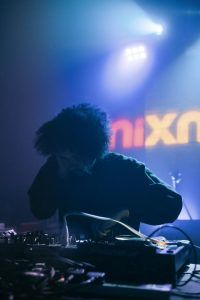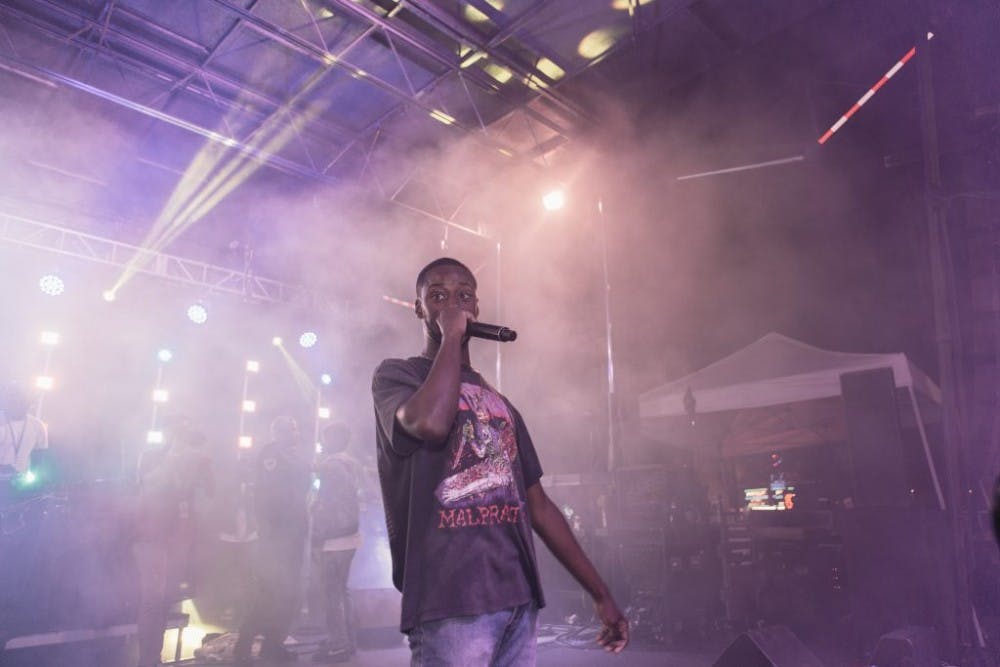GoldLink’s entire discography — two mixtapes, an album and some singles — is thematically similar to “Hey Ya” by Outkast. The beats are mostly made to dance to, with loose percussion and a happy-go-lucky approach to treble notes. The lyrics, on the other hand, are not so optimistic. Most of GoldLink’s songs deal with heartbreak, poverty, drugs and alcohol, sadness, death and all the topics that one does not associate with what the artist himself calls “future bounce.”
Like “Hey Ya,” GoldLink is fun to listen to. He has a half-rap, half-singing style which accents his day party beats well. However, once you really listen to the lyrics, you become conflicted. This is not a bad thing, and if anything it’s what makes GoldLink’s music so good. There is a certain dichotomy between rhythm and lyric that accents both while negating neither.
At What Cost is, if nothing else, a D.C. album. GoldLink’s music is heavily influenced by go-go music, a genre born and bred in D.C., and At What Cost actually features a go-go track, “Hands on Your Knees.” That song was produced by the Canadian DJ Kaytranada, who has been getting more and more attention over the last few years and collaborated with GoldLink on his 2014 single “Dance on Me.”
Beyond the musical influences, the album deals with life in the nation’s capital, but not the bleached marble and statues of dead white men that most people associate with D.C. Like all cities, D.C. is home to its share of violence and poverty, and At What Cost offers some insight into what life is like away from downtown. In an interview with DJBooth, GoldLink discussed how personal this album was for him as both a story about his hometown and about himself.

That sense comes across in almost every song on the album, with their cutting-but-catchy lyrics and mournful backing vocals. Even when the lyrics are not overtly sad, GoldLink’s voice has a certain tone to it that is undercut with pain. An appropriate comparison, although they are opposite ends of the rap spectrum, would be Havoc and Prodigy on The Infamous Mobb Deep. There is genuine suffering in this music, although with GoldLink it is a little more muted amongst the dance-ready beats.
At What Cost is a fast-paced album; From start to finish it is only 48 minutes long. However, unlike some modern rap albums, the music flows well. Each song leads into the next seamlessly, connected by rhythm and theme. The beats break and switch, but it still feels logical in the context of the album. This is in no small part due to the fantastic production courtesy of a range of producers, including the aforementioned Kaytranada, frequent GoldLink collaborator Louie Lastic, Matt Martians of The Internet and others.
For this album, GoldLink recruited some fairly serious talent to feature on a few tracks. Fellow D.C. native Wale adds a verse to “Summatime” and Shy Glizzy does his bit on “Crew.” At What Cost’s best features are not rappers, though: Singers April George, Mya, Radiant Children and Jazmine Sullivan work with GoldLink on the track, adding to the emotional depth of the music and setting it aside from simple rap.
To be honest, until listening to At What Cost, I was never an ardent GoldLink fan. I tended to classify his music as rhythmic optimism which I have no interest in, although his lyrics sort of saved it for me. However, over time, the “future bounce” style has grown on my rocky, lifeless soul. What saved it for me was actually reading about the story behind this album.
It is easy to write GoldLink off as party rap with a catchy beat and good rhymes, but when you learn a bit more about his life and the thought that goes into his music, you can see that it is not so simple.
Yes, At What Cost is fun to listen to, but it would be equally at home at a party as it would be in a pit of existential doubt, fear and pain. This is certainly not an uncommon theme in rap these days; Everybody loves Future, and he is, if we are honest, a horribly depressed drug addict.
However, GoldLink delivers his pain with a bit of abstraction, so the listener can either enjoy At What Cost for its dance credentials or for its soulful lyrics. The point is, At What Cost is a good album and it made me appreciate an artist that I had, until now, overlooked.






